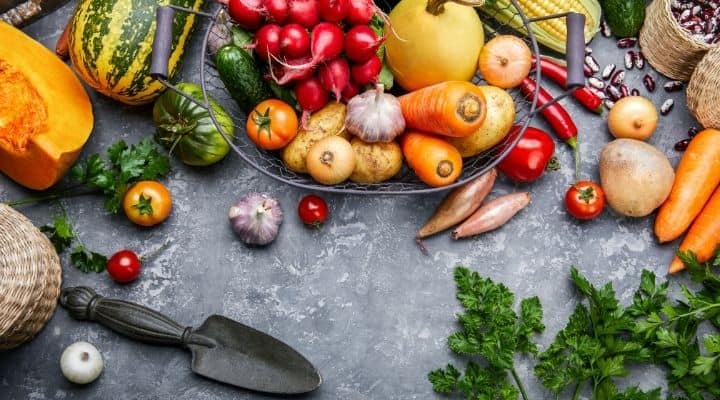
One of the lessons learned during COVID is that you can’t always depend on the grocery store to have what you need in stock.
But guess what? You don’t have to depend on the grocery store.
Survival gardens allow people to grow and store their food straight from their yards. In this post, we look at the 20 best survival garden plants to add to your list for a variety of nutritious choices.
What is a Survival Garden?
The main objective behind a survival garden is to grow a diverse array of fruits, vegetables, herbs, and edible flowers to fully sustain a person or family during difficult times when resources are scarce.
The plants are carefully selected based on nutritional content, ease of cultivation, and preference.
Harvested crops are then eaten fresh or preserved through drying, freezing, or canning for future consumption.
What to Consider When Choosing Your Crops
A survival garden is far from being your grandma’s pretty butterfly garden. This is all about growing what you need to eat for survival. It’s going back to your ancestors’ days where farming, foraging, and saving seeds was not an option- it was a necessity.
That means choosing the types of plants for your garden takes time and planning. Instead of just going for the trendy superfood of the year, look at a wide variety of plants that are rich in nutrients and flavors.
You’ll also want to study the region where you live and the seasonal patterns to learn how weather and climate fluctuations will affect your crops.
Remember, you want to have enough food stored in a basement or cellar to last throughout the winter until the next spring planting season.
Different plants grow at different times of the year. Stagger your planting and grow many varieties to ensure you’re growing as much as you can throughout the year.
Here’s what else to consider:
We won’t sugarcoat it. Learning how to grow a survival garden is hard work. We make it a little bit easier by giving you 20 of the best survival plants based on ease, nutrition, and versatility.
20 Best Survival Plants to Grow
Survival plants and seeds need to be carefully selected to ensure your family receives the right balance of nutrients for optimal health.
We’ve listed 20 of the best vegetables, fruits, herbs, and edible flowers that can be grown throughout the year. These varieties are packed with vitamins and minerals and can be stored for long periods of time.
1. Potatoes
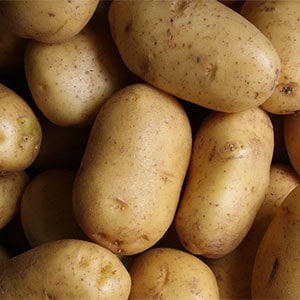
Potatoes are one of the easiest vegetables to grow and are versatile to boot. You can grow them in any climate, in almost any type of soil.
Best of all, they can be cooked in many different ways, providing a calorie-dense meal that will keep you full for hours.
Plant potatoes early in the springtime, 2-3 weeks before the last frost date. They take around 100 days to reach maturity. Store them in your basement or root cellar for 2-3 months.
2. Herbs
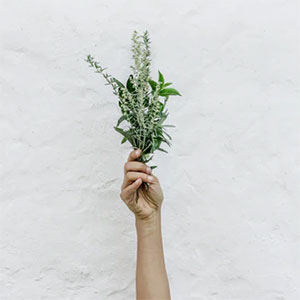
Fresh herbs add delectable flavor to any dish, and they’re easy to grow in containers right outside your kitchen window.
Basil, rosemary, oregano, cilantro, parsley, and thyme are commonly used for cooking.
Rosemary, in particular, is rich in antioxidants and has anti-inflammatory properties. Oregano is antibacterial, packed with phytonutrients that fight infections.
You can cook with fresh herbs or dry them in a dehydrator and grind them into spices to be stored.
3. Beans

Beans are another easy and versatile crop that can be grown in bushes or on poles. The seeds are protein-rich and can be saved to grow next season.
Beans sprout quickly and are easy to maintain. Since they grow on poles, this is an excellent crop for apartment owners who have limited space. Beans can grow vertically, and when planted close to another crop, they’ll climb on up their neighbor- no harm done.
Folks, this is the crop that keeps giving. The more frequently you harvest your beans, the more the bushes will yield for future picking.
They can be dried and stored for up to 2-3 years. They help you feel fuller longer and provide protein, folate, and antioxidants.
4. Kale
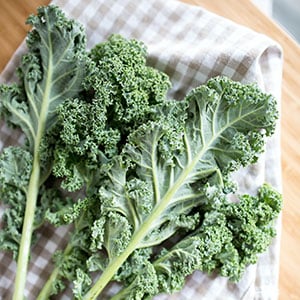
This is a hardy perennial plant that thrives during the winter and offers a smorgasbord of nutrients, including vitamin A, vitamin C, vitamin B6, folate, and manganese, iron, calcium, potassium, and phosphorus- just to name a few.
Plant kale 3-5 weeks before the last frost of the season. It can be grown in a garden patch, raised bed, or in a container.
5. Corn

While corn isn’t the most practical crop for apartments, it is considered a garden patch staple. Plus, it’s the perfect companion for beans to climb.
There are numerous corn varieties, but dent corn and flour corn are the most versatile for survival gardening.
You can dry the kernels and nixtamalize them to retain the nutritional benefits. It can also be ground into flour and sealed in an airtight container for baking.
If you love a good ol’ ear of buttered corn on the cob, grow sweet corn- it’s the classic variety that many Americans are familiar with.
6. Squash

The great thing about squash is that it grows in both the summer and wintertime, which means you can enjoy this versatile veggie as a staple in your family’s diet.
The fast-growing yellow summer squash variety is a nutritional powerhouse packed with vitamin A, vitamin B6, vitamin C, folate, magnesium, potassium, phosphorous, fiber, and riboflavin.
Winter squash takes longer to grow but can be stored for longer periods compared to summer squash. Plan The Three Sisters vegetable plot by planting your squash a good distance from your beans and corn, as it will sprawl and create a natural ground cover.
You can also eat the squash blossoms as an edible flower, which we will discuss later!
7. Lentils

Lentils are tasty, versatile for cooking, and a protein superstar with a whopping 18 grams per serving. This alone makes it a survival garden essential.
Like any legume, it’s an excellent base food for veggies and meats, with a subtle taste that absorbs flavors and adds the perfect touch to salads, curries, soups, and vegetarian sandwich fillings.
You can store dried lentils in an airtight container for up to a year.
8. Onions
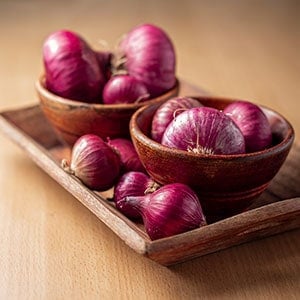
While this isn’t the most calorie-dense crop, onions add a crunchy burst of flavor to any dish.
A hardy cold weather plant, you can sow the seeds in spring or fall. They grow easily with little maintenance required. It takes about 90 days for onions to reach maturity.
There are many varieties of onions, so don’t be afraid to mix them up. Leeks offer a more subtle flavor and are fantastic in cooked dishes.
Green onions are also easy to grow and use as a garnish. Propagate a bunch of the white bulbs in a jar of water and set it on your windowsill to grow.
9. Garlic
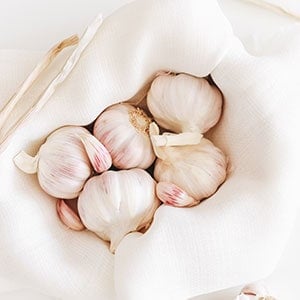
This is a must-have perennial that offers powerful medicinal properties and has many uses. It’s also a breeze to grow. Plant one garlic bulb, and it will continue to produce every year afterward.
Garlic is tolerant in most soils, except soggy soil. Plant garlic cloves root-side down in full sunshine during the fall season. Come spring, you’ll have a bounty of bulbs ripe for the picking.
When the raw cloves are crushed and consumed, the allicin compounds and other sulfur compounds are released and aid in health by combating colds and flu, lowering cholesterol, improving blood pressure, and reducing heart disease.
10. Tomatoes

Tomatoes are a garden staple that turns juicy and ripe right on the vine. One plant produces many fruits quickly that can be eaten raw, cooked in stews, or canned/dried.
One of the biggest benefits of tomatoes for a survival garden is that it’s easy to save the seeds for continuous planting. Tomato seeds will even self-plant and grow naturally without any help from the gardener.
11. Rhubarb
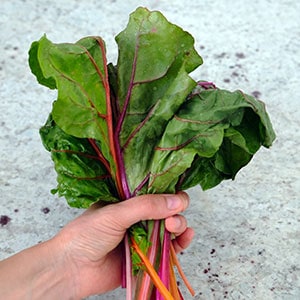
Rhubarb is an easy perennial crop that needs very little attention. It can also be planted in a container, making it perfect for apartment gardens.
It’s also versatile for cooking. Use it to make tasty bread, pies, sauces, soups, stews, and candies.
All it needs is plenty of sunshine, and really any kind of soil will do. Come harvest time; the stalks will be shiny and crisp.
However, make sure to discard the leaves and roots because these parts are toxic when ingested.
12. Berries

For the sweet tooth in the family, there’s a wide array of berries that are easy to grow and offer plenty of health benefits.
Raspberries, blueberries, strawberries, and cranberries are all solid options for canned jams and jellies. You can also freeze them for smoothies or dehydrate them for a snack.
13. Peppers

While peppers are easy to grow and are a top gardener pick for favorite crops, it can be overwhelming deciding on a variety for your own space.
Here are the most popular choices:
Peppers also make great companion plants for carrots, onions, spinach, okra, cucumbers, and squash.
14. Cucumbers
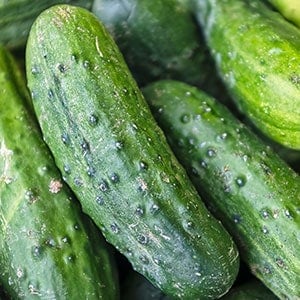
This is a crop you can enjoy year-round, plus it’s easy to grow and care for. Cucumbers are versatile, aid in hydration on those hot summer days, and are favorites for canning (pickles, anyone?).
Cucumbers grow on the vine and can be left to sprawl over the ground, although it’s more beneficial to let them climb off the ground.
Not only will the plant produce more cucumbers this way, but it lowers risks caused by direct contact with the soil, including diseases, mold, and pests.
15. Melons

Watermelons, honeydews, and cantaloupes are all delicious fruits to enjoy from spring to fall- and it doesn’t hurt that a single large melon can feed a few people.
Make sure your melon seeds are sown with plenty of room for the vines to spread over the ground. Use composted manure or a high-quality organic fertilizer to encourage leaf growth.
The lusher the leaves, the sweeter the melon! Enjoy your harvested melons fresh off the vine or puree the meat for a juicy summertime treat. You can even pickle the rind for storage.
16. Calendula
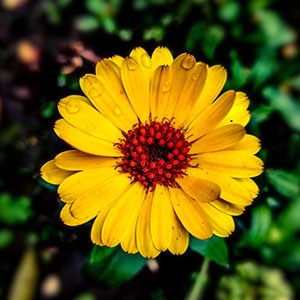
The bright orange and yellow petals of the Calendula sure boost the garden’s aesthetic appeal, but these blossoms are actually edible and nutritious.
The plant itself is popular as a companion for its ability to ward off insects.
You can use the bitter-tasting leaves in salads or the petals as a yellow food coloring. It has been used for centuries in fabric dyes and foods.
It’s also said to have strong medicinal properties, reducing menstrual cramps, soothing sore throats, and lowering fevers.
The petals have a subtle licorice taste and can be brewed as an herbal tea, used to garnish cakes, or cooked in soups.
17. Lavender

Nicknamed the “herb of love,” lavender is always a winner in the garden for its soft color, dreamy scent, and versatility.
Dried lavender is used medicinally to treat insomnia, stress, depression, and exhaustion. It can also be used in cooking for sauces and marinades.
Plant the seeds in early spring or summer. Lavender needs full sunlight and well-drained soil to thrive.
Make sure to water the young sprouts frequently, but mature Lavender is drought-tolerant, and you won’t have to water it as much.
18. Squash Blossom

The squash is a top-tier survival gardening crop, but did you know you can also eat the blossoms? Squash blossoms are large, yellow, and taste delectable.
Toss them raw in a salad or satay them with your favorite spices. You can even make ricotta-stuffed squash blossoms deep-fried. Squash blossoms provide vitamin A, vitamin c, and boost the immune system.
19. Sweet Potatoes

Like potatoes, sweet potatoes are perfect for a survival garden but provide a different set of nutritional benefits. Calorie dense and oh so flavorful, you can cook savory and sweet dishes with sweet potatoes.
They’re also incredibly easy to grow, hardy, and low maintenance. You can also eat the leaves raw in salads or sauteed.
Sweet potatoes are packed with beta carotene, potassium, and vitamin C.
20. Dandelion

Dandelions are the “weeds” your parents always complained about. They’re resilient, can grow anywhere-even the tiniest cracks, and grow at warp speed.
Another fact that may surprise you is that dandelions are chock full of antioxidants. They are useful for treating inflammation, lowering blood pressure, and reducing cholesterol- among many other benefits.
They also provide magnesium, calcium, vitamin A, vitamin C, vitamin K, and folate. It’s considered a superfood for its high volume of vitamins and minerals, even more so than spinach!
The entire plant and blossoms are edible and taste great in salads or brewed as herbal tea.
Final Thoughts on the Best Survival Garden Plants
Starting a garden is fun, but when you turn it into a survival garden, you get high-quality organic food that surpasses supermarket produce, and all at a much lower price.
To make it work, choosing the right survival garden plants is paramount. Remember that diversity is key, so always include a wide range of vegetables, fruits, nuts, and flowers.
References & Resources:
- Best Foods to Grow in a Survival Garden, The Prepared.
- Survival Garden: Everything You Need to Know to Get Started, Morning Chores.